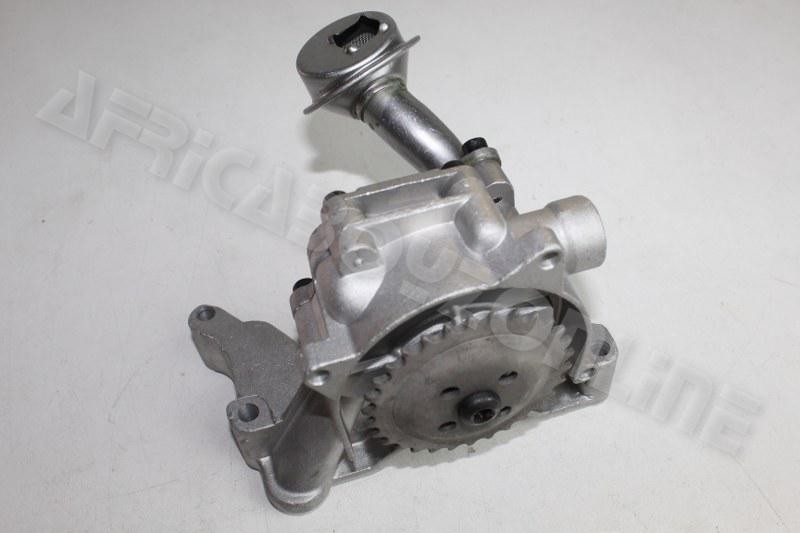Exactly How a Clp Engine Can Improve Effectiveness in Various Industries
The development of CLP engines marks a significant change in functional efficiency throughout different industries, driven by their capability to maximize gas usage and lessen downtime. Industries such as production and logistics stand to get substantially from their durable design and consistent power output, which guarantee to simplify procedures and boost efficiency. As organizations significantly focus on sustainability together with efficiency, the role of CLP engines ends up being even a lot more important. What stays to be seen is just how these innovations will shape the future landscape of industrial operations and their effect on broader economic patterns (clp engine).
Overview of CLP Engines
CLP engines, or Continual Liquid Propellant engines, represent a considerable improvement in propulsion innovation, specifically for space applications. These engines utilize a continual feed system that allows for the continual expulsion of propellant, causing boosted performance and efficiency compared to typical solid or hybrid propulsion systems. By maintaining a constant circulation of liquid propellant, CLP engines can attain much more specific drive control, which is important for steering spacecraft in various goal scenarios.
The style of CLP engines incorporates advanced products and ingenious fuel monitoring systems. clp engine. This results in reduced weight and raised dependability, crucial elements for long-duration area objectives. Moreover, the constant procedure decreases the threat of combustion instability, a typical difficulty in traditional rocket engines.

Advantages in Manufacturing
The manufacturing of Continual Liquid Propellant (CLP) engines offers several notable advantages that boost both performance and cost-effectiveness. Among the primary benefits is the streamlined manufacturing process, which reduces the complexity linked with typical propulsion systems. By making use of liquid propellant, makers can accomplish greater precision in engine performance, leading to optimized power output and reduced waste.
Furthermore, CLP engines assist in a greater level of modularity, enabling less complicated combination right into different production lines. This adaptability can considerably reduce preparations and enhance general functional adaptability. Making use of CLP technology also has a tendency to minimize the need for extensive upkeep as a result of fewer relocating components, which translates right into minimized downtime and functional prices.

Applications in Logistics
Leveraging Constant Fluid Propellant (CLP) engines in logistics supplies substantial benefits in functional efficiency and dependability. These engines give a durable service for different transport needs, making it possible for the smooth motion of products across substantial distances. The inherent design of CLP engines permits regular power output, which converts right into smoother and more predictable transportation routines.
Among the essential applications of CLP engines in logistics is in heavy-duty freight transportation, where they can drive both ground and airborne vehicles. Their ability to preserve high performance under differing load conditions guarantees that delivery timelines are met, thereby enhancing client fulfillment. Furthermore, CLP engines can be integrated right into automated logistics systems, facilitating real-time tracking and optimizing path planning.
In addition, the sturdiness of CLP engines decreases upkeep downtime, permitting logistics firms to optimize their functional abilities. This is specifically helpful in warehousing procedures, where effectiveness in handling and moving products is essential. As logistics remains to advance, the assimilation of CLP engines represents a forward-thinking method that not only boosts performance yet additionally sustains the sector's expanding demands for dependability and rate.
Influence On Power Effectiveness
How do Continual Fluid Propellant (CLP) engines improve energy effectiveness in transportation? CLP engines use a consistent circulation of liquid fuel, maximizing burning procedures and maintaining a steady thrust output. This design lessens power losses linked with traditional combustion engines, where fuel delivery can differ and result in ineffectiveness.
The constant operation of CLP engines permits for an extra reliable thermal cycle, resulting in greater details impulse contrasted to conventional engines. clp engine. This converts to lowered fuel intake for the exact same quantity of work done, significantly decreasing functional expenses across various transport fields, including air travel and maritime markets
Furthermore, the capacity of CLP engines check out this site to keep optimal performance under varying lots problems reduces the need for frequent velocity and deceleration, further enhancing fuel effectiveness. Improved power performance not just adds to set you back savings however likewise leads to decrease greenhouse gas exhausts, aligning with international sustainability objectives.
Future Trends and Innovations
Arising innovations in Constant Fluid Propellant (CLP) engine innovation pledge to revolutionize the landscape of transportation effectiveness and sustainability. As markets pivot towards greener choices, CLP engines stand at the leading edge, incorporating cutting-edge products and design approaches that boost efficiency while minimizing ecological impact.
One of one of the most appealing fads is the fostering of crossbreed systems that combine CLP engines with renewable resource sources. This harmony can maximize gas intake and minimize discharges, lining up with global sustainability objectives. Advancements in computational liquid characteristics (CFD) are assisting in the design of even more aerodynamically effective engines, leading to minimized drag and enhanced gas effectiveness.
Additionally, the growth of clever surveillance systems is readied to enhance functional efficiencies. These systems leverage information analytics and IoT innovation to optimize engine performance in real-time, making sure that the engines operate within their most effective specifications.
As research remains to discover alternative propellant Click Here formulations-- such as biofuels and synthetic gas-- the future of CLP engines looks appealing. By utilizing these innovations, markets can not only improve their effectiveness but additionally add considerably to a cleaner, extra lasting future in transport.
Verdict
In verdict, CLP engines stand for a significant improvement in performance across numerous sectors. Their ability to enhance fuel consumption and minimize operational prices, integrated with a constant feed system, boosts power result and operational reliability. The assimilation of advanced materials and fewer relocating parts lessens maintenance demands, while alignment with sustainability objectives placements CLP engines as a pivotal technology for the future. Continued technology in this area promises additional improvements in efficiency and ecological performance.